#How Ram Navami is celebrated
Text
Which deity is more popular in North India, Lord Ram or Lord Krishna?
Imagine walking through the lively streets of North India, where every corner holds a new tale, a fresh festivity, and a deity waiting to be honored. Now, let's dive into the enchanting world of Lord Ram and Lord Krishna, two beloved figures who weave their magic through the hearts of the people.
In Uttar Pradesh, where Ayodhya proudly proclaims itself as Ram's birthplace, there's a palpable sense of devotion that fills the air, especially during Ram Navami and the dazzling Diwali festival. It's as if the entire town bursts into life, painting the streets with vibrant colors and echoing chants, all celebrating Ram's virtues of righteousness and duty.
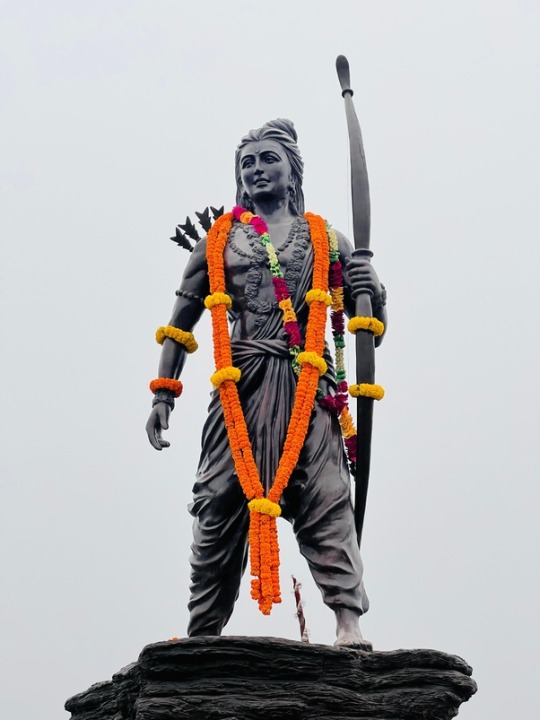
But take a stroll into the cozy lanes of Vrindavan and Mathura, and you'll find a different kind of enchantment. Here, it's all about Krishna – the charming trickster whose flute melodies and playful antics stole the hearts of all who encountered him. During Janmashtami, the celebration of his birth, these towns transform into whirlwinds of joy and festivity, as if Krishna's laughter still dances through the air.
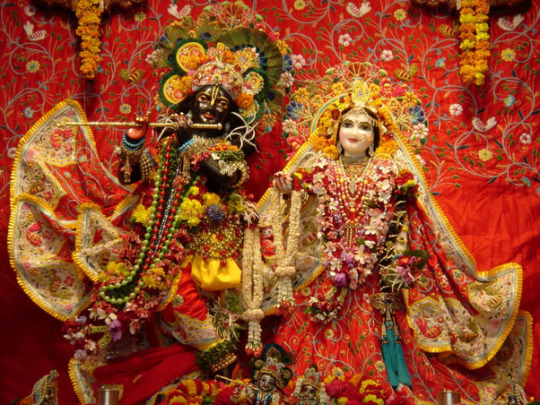
What's truly captivating is how deeply people connect with these divine beings. For some, it's Ram's unwavering strength and moral compass that resonate in their souls, guiding them through life's challenges. For others, it's Krishna's playful wisdom, especially as the charioteer in the Bhagavad Gita, that offers comfort and guidance in times of uncertainty. It's like choosing a beloved character from a cherished story – each one speaks to us in a unique way, touching our hearts and shaping our beliefs.
Ultimately, it's not about who's more popular or who receives the most offerings. It's about forging a personal connection with the divine, finding solace and inspiration in their stories and teachings. Whether we're drawn to Ram's sense of duty or Krishna's playful charm, Hinduism offers a rich tapestry of beliefs that invites us to explore, connect, and find our own path to the divine, guided by the warmth of human emotion and connection."
Certainly! Both Lord Ram and Lord Krishna offer profound teachings that continue to inspire millions of people worldwide.
Learnings from Lord Ram:
Duty and Responsibility: Ram epitomizes the principle of duty and responsibility. His unwavering commitment to upholding dharma (righteousness) and fulfilling his responsibilities as a son, husband, and king teaches us the importance of fulfilling our duties with dedication and integrity.
Resilience in Adversity: Ram's life is marked by numerous challenges and trials, including exile from his kingdom and the abduction of his wife, Sita. Yet, he faces each adversity with courage, resilience, and grace, teaching us the value of perseverance and steadfastness in the face of hardship.
Compassion and Forgiveness: Despite the injustices he faces, Ram embodies compassion and forgiveness. His willingness to forgive even those who wronged him, such as Ravana, demonstrates the power of compassion and the importance of letting go of resentment.

Learnings from Lord Krishna:
Wisdom and Guidance: Krishna, often revered as the divine teacher, imparts profound wisdom and guidance to Arjuna in the Bhagavad Gita. His teachings on duty, righteousness, and the nature of existence provide invaluable insights into navigating life's complexities with wisdom and clarity.
Detachment and Surrender: Krishna emphasizes the importance of detachment from the fruits of our actions and surrendering to the divine will. By relinquishing attachment to outcomes and surrendering to the greater cosmic plan, we can find inner peace and liberation from suffering.
Devotion and Love: Krishna's divine love and devotion, particularly in his interactions with his devotees like Radha, exemplify the power of unconditional love and devotion in forging a deep connection with the divine. His teachings remind us of the transformative power of love in transcending worldly boundaries and experiencing spiritual union.
In essence, the teachings of Lord Ram and Lord Krishna offer timeless wisdom and guidance for navigating life's journey with integrity, resilience, compassion, and spiritual insight.
"Explore Ayodhya and Sanatan Dharma's essence with us! Visit our website http://www.shriayodhyadhamprasadam.com to dive into their timeless wisdom and offerings.
Let’s sustain and spread essence of our dharma together. Join the journey now!"
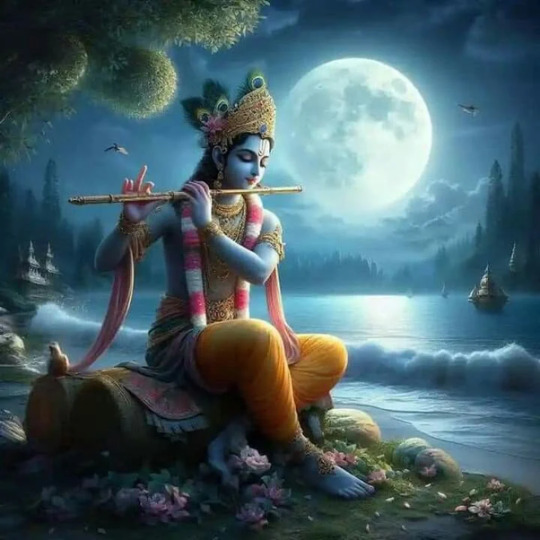
#ayodhya#ram mandir#jai shree ram#bharat#inspirational quotes#ramayana#ayodharammandir#vrindavan#hare krishna#uttarpradesh#branding#north india tour#india#sanatandharma#sanatani#hinduism
5 notes
·
View notes
Text
Best Instagram Bio for Ram Bhakt
Get more Instagram Bio for Ram Bhakt. Instagram bios are more than just a brief introduction; they're a way to express your beliefs, interests, and passions. For devotees of Lord Ram, crafting a bio that reflects your devotion can create a meaningful connection with like-minded followers. Here are some thoughtful bio ideas tailored for Ram Bhakts to inspire your Instagram profile:
Traditional Approach
🙏🏼 Ram Bhakt | 🕉️ Devoted to Lord Ram | 📿 Embracing Dharma
Quoting Scriptures
🌼 श्री राम जय राम जय जय राम | 📖 Reciting Ramayan verses | 🙌🏼 Faith in Ram’s Grace
Reflecting Devotion
🕊️ Surrendered to Lord Ram | 🙏🏼 Seeking His Blessings | 🌟 Following Ram’s Teachings
Sharing Wisdom
📚 Learning from Ram's Life | 🌹 Ramayana Enthusiast | 🌻 Spreading Love and Kindness
Cultural Pride
🚩 Proud Hindu | 🕌 Ram Bhakti is my Strength | 🌸 Upholding Sanatan Dharma
Personal Reflection
🌿 Finding Peace in Ram’s Name | 💫 Ram is My Protector | 🌼 Living with Bhakti
Unity in Devotion
🌺 Bhakt of Maryada Purushottam | 🌅 Embracing Ram Rajya Ideals | 🕊️ Love for All, Hatred for None
Tips for Crafting Your Ram Bhakt Instagram Bio
Crafting a meaningful Instagram bio centered around your devotion to Lord Ram requires thought and intention. Here are some tips to help you create a bio that resonates with your beliefs and attracts followers who share your spiritual journey:
Clarity and Simplicity: Keep your bio clear and straightforward, using simple language that reflects your devotion.
Incorporate Spiritual Symbols: Use emojis such as 🙏🏼, 🌼, 📿, and 🌸 to add visual appeal and convey your spiritual connection.
Share Personal Insights: Reflect on how Ram's teachings influence your life and share brief insights or quotes from Ramayan.
Stay Authentic: Your bio should reflect your genuine beliefs and practices. Authenticity builds trust and fosters meaningful connections.
Update with Festivals or Events: Consider updating your bio during Ram Navami or other significant festivals to reflect your participation and celebration.
Get More Instagram Bio for Girls
Conclusion
Your Instagram bio is a digital reflection of your devotion to Lord Ram. By crafting a thoughtful and authentic bio, you can connect with fellow Ram Bhakts and share your spiritual journey with a wider audience. Whether you choose to quote scriptures, share personal reflections, or simply express your faith, let your bio inspire others and create a sense of community around your devotion to Maryada Purushottam. Embrace the opportunity to showcase your beliefs with style and grace on Instagram.
0 notes
Text
Discover the Spiritual Heart of Adelaide: The Hindu Temple in Adelaide
Nestled in the vibrant city of Adelaide, the Hanuman Mandir stands as a beacon of spirituality, culture, and community for Hindus and visitors alike. This Hindu temple in Adelaide is not just a place of worship but a cultural hub where ancient traditions meet modern community spirit.
A Sanctuary of Faith and Devotion
The Hanuman Mandir, dedicated to Lord Hanuman, serves as a sanctuary for devotees seeking spiritual solace and divine blessings. Lord Hanuman, revered for his unwavering devotion, strength, and humility, is a central figure in Hinduism, making this temple a focal point of reverence and celebration.
Visitors to the temple are greeted with the serene ambiance and the intricate architecture that reflects the rich cultural heritage of Hinduism. The temple's design and structure are meticulously crafted, with every element symbolizing deeper spiritual meanings. The divine idol of Lord Hanuman, adorned with garlands and traditional offerings, radiates a powerful presence, drawing worshippers into a state of meditation and devotion.
A Hub for Cultural Celebrations
The Hanuman Mandir in Adelaide is more than just a place of worship; it is a vibrant cultural center where festivals and rituals are celebrated with grandeur and fervor. Major Hindu festivals such as Diwali, Holi, and Ram Navami are marked by elaborate ceremonies, traditional music, dance performances, and communal feasts.
These celebrations are not only spiritual observances but also opportunities for the community to come together, fostering a sense of unity and shared cultural identity. The temple organizes various events and activities that engage all age groups, from storytelling sessions for children to spiritual discourses and yoga classes for adults.
Serving the Community
The Hanuman Mandir plays a pivotal role in serving the broader community. It regularly organizes charity drives, food distribution programs, and educational workshops. The temple's community services extend beyond its devotees, reaching out to assist those in need, irrespective of their religious or cultural backgrounds.
In addition to its charitable endeavors, the temple provides a platform for educational and cultural exchange. Language classes, art workshops, and cultural seminars are conducted to educate both Hindus and the wider community about the rich traditions and values of Hinduism.
A Place for Everyone
While the Hanuman Mandir is a Hindu temple in Adelaide, it warmly welcomes people from all walks of life. The temple's inclusive approach encourages interfaith dialogue and understanding, promoting peace and harmony in the multicultural fabric of Adelaide.
Visitors are often struck by the warm hospitality extended by the temple's volunteers and devotees. Guided tours are available for those interested in learning more about Hinduism, the significance of temple rituals, and the cultural heritage represented by the temple.
Visiting the Hanuman Mandir
Located conveniently in Adelaide, the Hanuman Mandir is accessible to both locals and tourists. The temple is open daily for worship and visitors, with special timings for major rituals and events. Detailed information about visiting hours, upcoming events, and community services can be found on the temple’s official website here.
Other Services:
Explore the significance of Lord Shani Dev at the Adelaide Hanuman Temple. Discover his revered role in Hindu mythology as the god of justice and discipline. Learn about the rituals and practices aimed at seeking his blessings to overcome obstacles and achieve prosperity in life.
Discover the story behind the construction of Hanuman Temple in Adelaide. Learn about the vision, efforts, and cultural significance that went into creating this spiritual sanctuary dedicated to Lord Hanuman. Explore how the temple serves as a focal point for community worship and cultural activities.
Explore the Gaushala Seva initiative at the Hanuman Temple in Adelaide, dedicated to caring for cows in accordance with Hindu traditions. Discover how this project fosters reverence for these sacred animals and promotes sustainable practices within the community.
0 notes
Text
Exploring Ayodhya: Top Attractions and Activities
Ayodhya, the Janmabhoomi of Lord Ram, stands as one of India’s most sacred destinations. Nestled in Uttar Pradesh, this quaint city holds immense spiritual significance and once served as the capital of the Kosala Kingdom.
Every corner of Ayodhya holds hidden treasures waiting to be explored, weaving a tapestry of ancient tales and religious fervor. Delve into the best places to visit in Ayodhya, each a chapter in the epic of Ramayana, evoking deep religious sentiments.
This guide is your roadmap for a memorable bus journey through Ayodhya, ensuring you don’t miss any of its gems. From iconic landmarks to cultural marvels, let’s embark on a journey through Ayodhya (Saket), an ancient city eternally entwined with timeless narratives.
Book Your Bus Ticket Online
Table of Contents
Best Places to Visit in Ayodhya
Ram Mandir
Hanuman Garhi
Ramkot Ayodhya
Nageshwarnath Temple
Kanak Bhawan
Treta Ke Thakur
Mani Parbat and Sugriv Parbat
Guptar Ghat
Valmiki Ramayan Bhawan
Tulsidas Smarak Bhawan
Ramkatha Park
Dashrath Mahal
Shri Ram Museum
Gulab Bari
Gurudwara Brahma Kund
Things to do in Ayodhya
Things to Keep in Mind for Places to Visit in Ayodhya
How to Reach Ayodhya?
FAQs For Best Places to Visit in Ayodhya
Which are the best places to visit in Ayodhya?
What are some of the best things to do in Ayodhya?
How to reach Ayodhya comfortably and on a budget?
Where can I go at night in Ayodhya?
Best Places to Visit in Ayodhya
1. Ram Mandir
Standing majestically at the very spot believed to be the birthplace of Lord Ram, the Ram Mandir is a testament to devotion and architectural brilliance. This grand temple, inaugurated in January 2024, is not merely a structure but a sacred pilgrimage site that resonates with spiritual seekers from all walks of life.
Combining modernity with tradition, the Ram Mandir serves as a beacon of Hindu legacy, drawing countless devotees to its hallowed precincts.
2. Hanuman Garhi
Hanuman Garhi, perched atop a hill, beckons devotees with its serene ambiance and towering statue of Lord Hanuman. Ascend the 76 steps to the entrance, where the divine presence of Hanuman Ji and Maa Anjani envelops visitors in awe.
Legend has it that Lord Hanuman resided here while safeguarding Ayodhya, offering panoramic views of the city to those who seek solace in its sacred embrace.
3. Ramkot Ayodhya
Ramkot, a historical fort steeped in myth and legend, stands as a silent witness to the glory of bygone eras. Adorned with tales from the Ramayana, this fort comes alive during Ram Navami, resonating with the jubilant celebrations of Lord Rama’s birth anniversary.
Explore the labyrinthine corridors of Ramkot and immerse yourself in the timeless tales of Ayodhya’s rich heritage.
4. Nageshwarnath Temple
Dedicated to Lord Nageshwarnath and believed to have been constructed by Lord Ram’s son, Kush, the Nageshwarnath Temple exudes an aura of sanctity and reverence. Adorned with intricate carvings and pavilions, this temple complex stands as a testament to Ayodhya’s cultural fusion of Hindu and Mughal influences.
Pilgrims flock here year-round, especially during Mahashivaratri, to pay homage to the divine Linga symbolizing Lord Shiva.
5. Kanak Bhawan
Kanak Bhawan, also known as Sone-ka-Ghar, is a divine abode dedicated to Lord Rama and Goddess Sita. According to legend, this temple was a gift from Queen Kaikeyi to her daughter, Sita, upon her marriage to Lord Rama.
Step into this opulent temple adorned with gold ornaments, where devotees seek blessings amidst intricate architectural marvels.
6. Treta Ke Thakur
Treta Ke Thakur stands as a sacred shrine marking the site where Lord Rama conducted the Ashwamedha Yagna upon his return from exile. Marvel at the exquisite craftsmanship adorning the temple walls, as devotees flock here seeking divine blessings for prosperity and well-being.
7. Mani Parbat and Sugriv Parbat
Twin hills shrouded in myth and legend, Mani Parbat and Sugriv Parbat bear witness to the alliance forged between Lord Rama and Sugriva, the king of Vanaras. Pilgrims ascend these hills to pay homage to their revered deities, amidst panoramic views of Ayodhya’s serene landscape.
8. Guptar Ghat
Guptar Ghat, nestled on the banks of the Sarayu River, offers pilgrims a tranquil retreat for spiritual rejuvenation. According to legend, Lord Rama sought solitude here during his exile, immersing himself in the sacred waters of the Sarayu.
Bathe in the holy waters, perform rituals, or simply meditate amidst the serene surroundings of Guptar Ghat.
Book Your Bus Ticket to Ayodhya Online with Busadda:
Delhi to Ayodhya bus
Agra to Ayodhya bus
Lucknow to Ayodhya bus
Gorakhpur to Ayodhya bus
Ayodhya to Delhi bus
Ayodhya to Lucknow bus
Ayodhya to Agra bus
Ayodhya to Gorakhpur bus
Ayodhya to Jewar Bus
Ayodhya to Mathura Bus
Mehandipur Balaji to Ayodhya bus
Jaipur to Ayodhya Bus
Ayodhya to Mehandipur Balaji Bus
9. Valmiki Ramayan Bhawan
Valmiki Ramayan Bhawan stands as a cultural haven dedicated to preserving and propagating the epic Ramayana and the teachings of sage Valmiki. Delve into manuscripts, artworks, and artefacts narrating the timeless saga of Lord Rama.
10. Tulsidas Smarak Bhawan
Tulsidas Smarak Bhawan pays homage to the revered saint poet Tulsidas, offering insights into his monumental work, “Ramcharitmanas.” Explore exhibits, paintings, and manuscripts chronicling Tulsidas’s spiritual and literary contributions.
11. Ramkatha Park
Ramkatha Park, a thematic ode to the Ramayana, invites visitors on a journey through the epic’s myriad episodes. From sculpted dioramas to immersive installations, the park serves as a vibrant canvas depicting the timeless saga of Lord Rama.
12. Dashrath Mahal
Dashrath Mahal, a historical marvel commemorating King Dasharatha’s legacy, showcases intricate architecture and ornate carvings reflecting Ayodhya’s ancient splendor.
13. Shri Ram Museum
Shri Ram Museum serves as a cultural repository, housing artefacts and artworks depicting the rich mythology and spiritual teachings of the Ramayana.
14. Gulab Bari
Gulab Bari, or the “Garden of Roses,” offers a tranquil sanctuary amidst Mughal-inspired architecture and verdant gardens. Explore ornate tombs and marble pavilions, or simply stroll amidst blooming roses, finding solace in this serene oasis.
15. Gurudwara Brahma Kund
Gurudwara Brahma Kund, a serene Sikh shrine, commemorates Guru Nanak Dev’s visit to Ayodhya. Nestled near the sacred Brahma Kund, this spiritual destination offers devotees a haven for worship and reflection.
Things to do in Ayodhya
As you traverse Ayodhya’s sacred precincts, immerse yourself in its vibrant culture and heritage. From serene river cruises to captivating sound and light shows, Ayodhya offers a plethora of experiences to enrich your journey.
Explore meticulously manicured parks and gardens.
Witness the grandeur of evening aartis by the ghats.
Savor authentic local cuisine, tantalizing your taste buds with Ayodhya’s culinary delights.
Embark on a serene Sarayu River Cruise, basking in the tranquility of its waters.
Partake in mesmerizing sound and light shows at Ram ki Paidi, reliving the saga of the Ramayana.
Things to Keep in Mind for Places to Visit in Ayodhya
Respect the sanctity of religious sites by adhering to their rules and decorum.
Pack appropriate attire considering Ayodhya’s varying climatic conditions.
Seek permission before photographing at religious sites, respecting the sanctity of the surroundings.
How to Reach Ayodhya?
Embark on a journey to Ayodhya, the cradle of spirituality, with ease and convenience by booking your bus tickets online with Busadda. Choose from a range of routes to reach Ayodhya comfortably and affordably..
Ayodhya to Jaipur bus
Ahmedabad to Ayodhya bus
Ayodhya to Ambala bus
Ayodhya to Bharatpur bus
Ayodhya to Dehradun bus
Ayodhya to Jhansi bus
Ayodhya to Sonipat bus
Ayodhya to Ludhiana bus
Ayodhya to Nagpur Bus
Ayodhya to Noida bus
Ayodhya to Panipat Bus
#cottage#cottagecore#landsccape#paradise#nature#adventure#explore#travel#travelling#photography#aesthetic#cottage garden#country cottage#cottage witch#flowercore#flowers#dark acadamia aesthetic#light academic aesthetic#photographers on tumblr#mountains#illustration#artists on tumblr#curators on tumblr#landscape#chaotic academia#cozycore#lovecore#inspiration#motivation#naturecore
0 notes
Text

Celebrating #RamNavami, the birth of Lord Rama, the ideal of duty, righteousness, and unwavering faith.
Tell us how you celebrate Ram Navami in the comments.

#shreeramnavami#ramnavami#ramlalajanmotsav#jaishreeram#DigiCosta
#shreeramnavami#ramnavami#ramlalajanmotsav#jaishreeram#DigiCosta#best digital marketing agency in indore#digital marketing services in indore#digital marketing company in indore#digital marketing agency near me#digital marketing#ppc ad agency in indore#paid marketing#digital marketing agency in indore#google ads marketing agency in indore#local seo
0 notes
Text



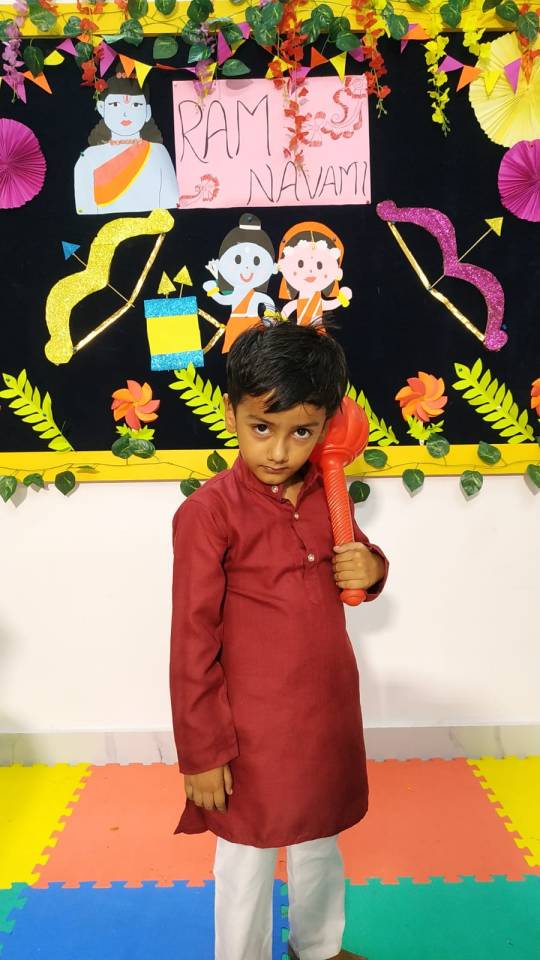


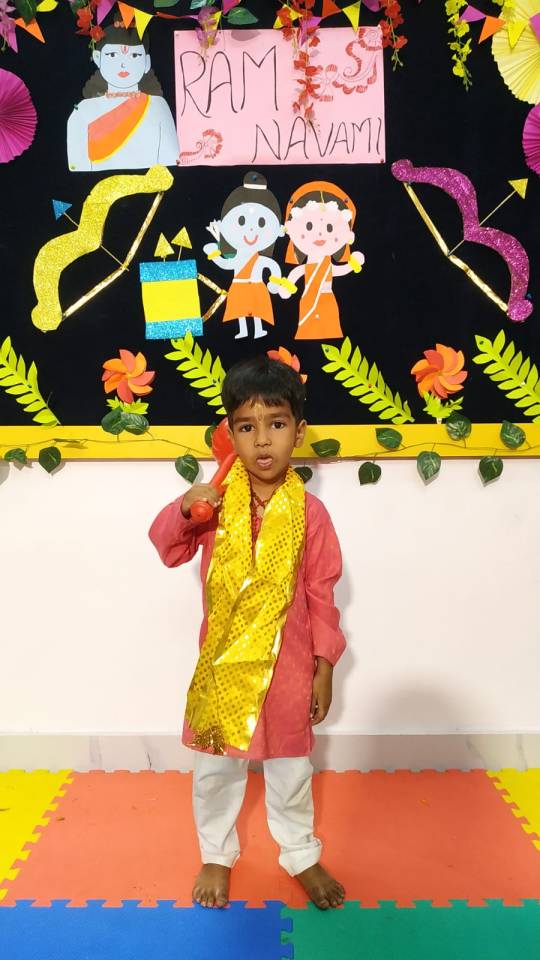
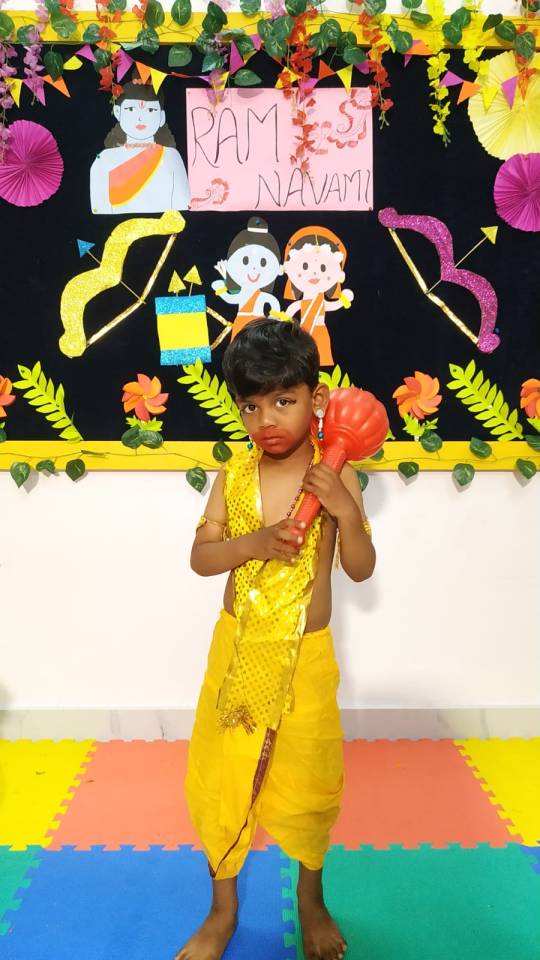



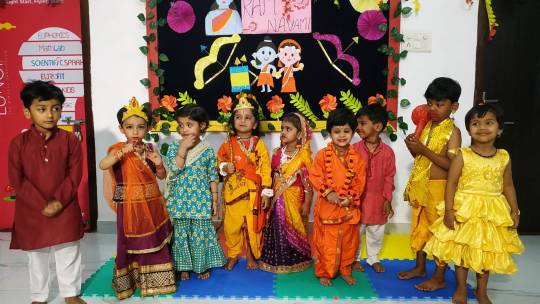
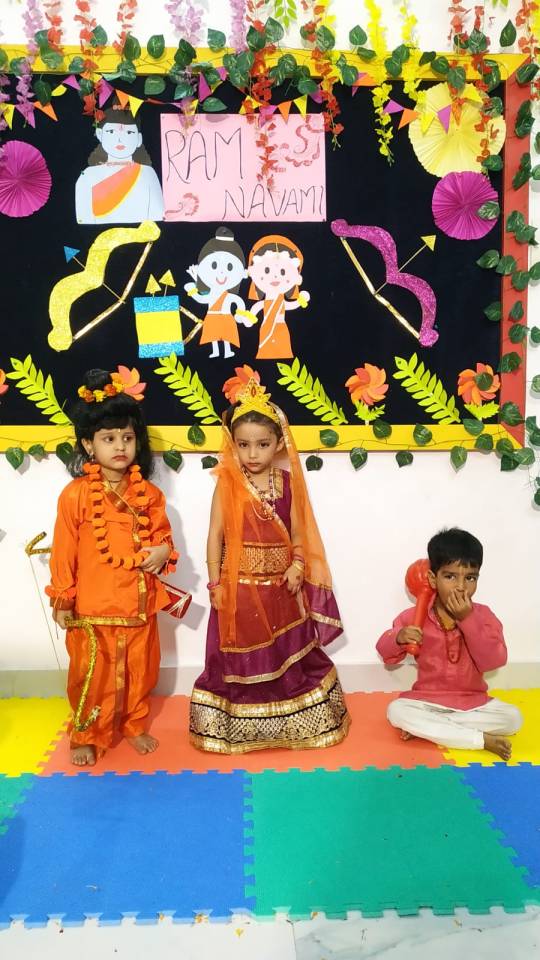



Joy blooms in the hearts of the little ones at EuroKids Preschool Patiya Varanasi, as they adorned their brightest smiles and traditional attire for a day steeped in heritage—Ram Navami. 🌼✨ #RamNavami
The air was vibrant with the sound of little voices, reciting verses from the Ramayana and performing skits that painted the epic's timeless tales. Our entrance bloomed with Rangoli's hues, welcoming all to a day of devotion and celebration. 🎨
Alongside academic learning, it's our cultural heartbeat that pulses through EuroKids. We take pride in cultivating a holistic understanding that interweaves spirituality with education. Today was more than a lesson; it was our tribute to the legacy of Lord Rama and a testament to the seed of values we nurture within.
Parents and educators united, basking in the joyous showcase of talent and tradition. Their glowing faces, reflecting the pride of sharing a sacred part of our culture with the future stewards of heritage. Together, we're not just a school; we're a community fostering growth, virtue, and unity.
Curious how love and learning meld in a weave of divine celebrations? Swipe to experience the puja's solemn grace, the children's animated performances, and the burst of laughter and color that filled the air. 🙏💃
Our bonds deepen with each shared tale, every chanted mantra, and the collective vision of molding citizens who not only excel academically but also carry the torch of our rich traditions.
Tell us, Tumblr fam, what are your fondest memories of cultural celebrations from your childhood? How do you think these events shape the young minds? Drop your thoughts, experiences, and, if you've got them, snaps from your own Ram Navami celebrations! 🤗💬
0 notes
Text
Happy Ram Navami! Celebrate with a Retelling on Bookalooza!

Today, on the joyous occasion of Ram Navami, we celebrate the birth of Lord Rama, the embodiment of righteousness and valour. As devotees across India come together to mark this special day, let's delve into the timeless tale of the Ramayana and explore how you can craft your own retelling on Bookalooza, India's favourite online publishing platform!
The Ramayana, an epic saga of love, duty, and perseverance, has captivated hearts and minds for centuries. The story of Rama, Sita, Lakshmana, Hanuman, and the epic battle between good and evil continues to resonate with readers of all ages.
Why Write Your Own Ramayana Retelling?

There are countless reasons to write your own Ramayana retelling. Here are a few:
Offer a Fresh Perspective: The Ramayana has been retold countless times. Yet, each retelling brings a unique perspective to the story. What aspects resonate with you? Is there a character you'd like to explore further? Your retelling can offer a fresh take on the classic tale.
Connect with Your Heritage: The Ramayana is a cornerstone of Indian culture. Writing your own retelling can be a way to connect with your heritage and explore the values it upholds.
Share Your Creativity: Bookalooza provides a platform to share your creative work. Whether you envision a thrilling adventure story, a heartwarming tale of devotion, or a thought-provoking drama exploration, Bookalooza empowers you to bring your vision to life.
Crafting Your Ramayana Retelling on Bookalooza

CREATE YOUR DREAM BOOK NOW
Here's how you can get started with writing your Ramayana retelling on Bookalooza:
Pick Your Focus: The Ramayana is vast. Decide what aspect of the story you want to focus on. Will you narrate the entire epic or zoom in on a specific episode? Will you focus on the relationship between Rama and Sita, the camaraderie between Rama and Lakshmana, or the unwavering devotion of Hanuman?
Genre and Style: There are no limitations! Will your retelling be a classic mythological tale, a fantasy adventure, or a historical fiction piece? Bookalooza caters to various genres and styles, so choose what excites you.
Target Audience: Who do you envision reading your story? Children, young adults, or adults? Tailoring your language, themes, and complexity to your target audience will enhance the reading experience.
Character Development: The characters of the Ramayana are iconic. How will you portray them? Will you stay true to the traditional portrayal or add your own nuances? Consider their motivations, emotions, and how they grow throughout the story.
Plot and Pacing: A well-structured plot keeps readers engaged. Will you follow the traditional Ramayana narrative or introduce new twists and turns? Ensure your story has a clear beginning, middle, and end, with a satisfying pace that keeps readers turning the pages.
Bookalooza: Your One-Stop Platform for Publishing Success

Bookalooza offers a user-friendly platform to bring your Ramayana retelling to life. Here's what makes Bookalooza special:
Easy Upload and Self-Publishing: Bookalooza makes the publishing process simple and convenient. Upload your manuscript, design your cover, and set your price – all from the comfort of your home.
Reach a Wide Audience: Bookalooza connects you with a vast pool of readers across India. Promote your book through Bookalooza's marketing tools and connect with readers who share your love for mythology and storytelling.
Earn Royalties: Set your book's price and earn royalties on every sale. Bookalooza offers transparent royalty structures, ensuring you get rewarded for your hard work.
In Conclusion
This Ram Navami, celebrate the spirit of storytelling by crafting your own Ramayana retelling on Bookalooza. Whether you're a seasoned writer or just starting, Bookalooza empowers you to share your voice and connect with readers who cherish the timeless values of the Ramayana. So, pick up your pen, unleash your creativity, and embark on this exciting literary journey!
Happy Ram Navami!
Don't miss out on our other blog posts!
0 notes
Text
Trip to Ayodhya: Exploring the Sacred City of India

Introduction
Ayodhya, nestled in the heart of Uttar Pradesh, India, is a city steeped in history, spirituality, and cultural significance. It's a destination that holds a special place in the hearts of millions of people worldwide, drawing pilgrims and tourists alike. From its rich mythological associations to its architectural marvels, Trip to Ayodhya offers a unique and unforgettable travel experience.
Discovering Ayodhya's Heritage
1. A Glimpse into Mythology
Ayodhya, often referred to as the birthplace of Lord Rama, is intricately woven into the fabric of Indian mythology. According to the epic Ramayana, this ancient city was ruled by the legendary King Dasharatha and served as the capital of the Kosala Kingdom.
2. Sacred Sites and Temples
Explore the plethora of temples and sacred sites that dot the landscape of Ayodhya. The Ram Janmabhoomi Temple, believed to be the birthplace of Lord Rama, stands as a symbol of devotion and faith. Other notable sites include the Hanuman Garhi Temple, Kanak Bhawan, and the Nageshwarnath Temple, each offering a glimpse into Ayodhya's spiritual heritage.
3. Architectural Marvels
Marvel at the architectural splendor of Ayodhya's historical monuments. The majestic structures like the Ramkot Fort and the ancient city walls transport visitors back in time, offering a glimpse of the city's glorious past.
Immersing in Ayodhya's Culture
4. Vibrant Festivals
Experience the vibrancy of Ayodhya's festivals, which showcase the city's rich cultural tapestry. The Ram Navami celebrations, held with great fervor and enthusiasm, attract devotees from far and wide. The city comes alive with colors, music, and traditional rituals during this auspicious occasion.
5. Cultural Heritage Walks
Embark on a cultural heritage walk through Ayodhya's quaint streets, soaking in the sights and sounds of this ancient city. Explore the bustling markets, interact with locals, and delve deeper into Ayodhya's cultural heritage.
Indulging in Ayodhya's Cuisine
6. Delectable Delicacies
Savor the flavors of Ayodhya's traditional cuisine, which is a delightful blend of North Indian and Awadhi flavors. From mouth-watering street food like chaat and samosas to authentic dishes like thandai and litti chokha, Ayodhya offers a gastronomic delight for food enthusiasts.
Exploring Beyond Ayodhya
7. Nearby Attractions
Venture beyond Ayodhya to explore nearby attractions like the holy city of Varanasi, known for its ghats and spiritual ambiance. The ancient city of Allahabad, renowned for the Triveni Sangam, where the Ganges, Yamuna, and Saraswati rivers converge, is also within easy reach.
Conclusion
Embark on a spiritual journey to Ayodhya and immerse yourself in the rich tapestry of its cultural heritage. From sacred temples to architectural marvels, this ancient city offers a unique blend of spirituality and history that leaves a lasting impression on every traveler. Visit for more at Visitayodhya.com.
FAQs (Frequently Asked Questions)
1. Is Ayodhya safe for tourists?
Ayodhya is considered a safe destination for tourists, with a welcoming environment and friendly locals. However, like any other travel destination, it's essential to exercise caution and be mindful of your surroundings.
2. What is the best time to visit Ayodhya?
The best time to visit Ayodhya is during the winter months, from October to March, when the weather is pleasant and ideal for exploring the city's attractions.
3. Are there any specific dress codes to be followed while visiting temples in Ayodhya?
While visiting temples in Ayodhya, it's advisable to dress modestly and adhere to traditional attire out of respect for the religious customs and traditions.
4. How can I reach Ayodhya?
Ayodhya is well-connected by road, rail, and air. The nearest airport is in Lucknow, approximately 135 kilometers away, while the closest railway station is in Ayodhya itself.
5. What are some must-try dishes in Ayodhya? Some must-try dishes in Ayodhya include litti chokha, aloo puri, thandai, and traditional sweets like peda and jalebi.
#Trip to Ayodhya#Ayodhya travel package#Travel to Ayodhya#Ayodhya Yatra#Ayodhya tour package#Reasonable ayodhya tour#Cheap travel package ayodhya#Reasonable travel package ayodhya
0 notes
Text
Navratri 2023: Know Interesting Facts About Navratri, Its History & Importance
Navratri is a major Hindu festival according to Indian mythological and religious significance, which is celebrated every year in the months of Magh, Chaitra, Ashadh, Ashwin from Pratipada to Navami. The word Navratri means 'nine nights'. Nine forms of Shakti are worshiped during these nine nights and ten days. The tenth day is famous as Dussehra.
The festival of Navratri is mainly celebrated twice a year, one in Chaitra month and the other in Ashwin month. According to the calendar, Shardiya Navratri starts every year from Pratipada Tithi of Shukla Paksha of Ashwin month and continues till Navami Tithi. .
On the occasion of Navratri, Durga Maa Idol is installed, and Garba and Ramlila are also organized during Navratri at many places. On the first day of this great festival, Ghat is established in the form of Kalash Sthapna. During the nine days of Navratri, the nine forms of Maa Durga are worshiped with full rules and Maa Durga Aarti is performed, and fasting is also observed, and on Dashami Tithi, Durga Maa Murti ends with immersion.

This year, Shardiya Navratri will start on October 15, 2023, end on October 23, 2023 and Dussehra will be celebrated on October 24.
History of Shardiya Navratri
One day during the Lankan war, there was an atmosphere of worry in Ram ji's army, on the other hand, there was a wave of joy in Ravana's camp. At that time, seeing his commander worried, Jamwant ji asked Shri Ram, "Lord, the reason for your worry." What if one day Ravana gets the upper hand in the war? You have the same quiver and the same bow, maybe tomorrow we will have the upper hand in the war.
Then Shri Ram said that the reason for my worry is something else, I have seen Shakti fighting on behalf of Ravana and how can we be victorious if there is Shakti, maybe he has worshiped Shakti, then Jamwant ji said that you should also worship Shakti and should respond to worship with worship only.
Then Lakshman ji was made the commander for the next day's war and Shri Ram asked Hanuman ji to pluck 108 blue lotuses from the river and Ram sat in meditation.
When the ninth day of Ram ji's meditation came, Shakti thought of testing Ram ji to see how much attention Ram ji had towards his goal. On the ninth day, when Ram ji was about to offer the 108th lotus, he noticed that the last lotus was missing from the plate. Then Ram ji decided that he would not leave the puja incomplete. He said that in childhood my mother Kaushalya used to call me Rajeev Nayan.
Therefore, now I have two more lotuses, I will complete my puja by dedicating one of my eye, then as soon as Ram ji took out the arrow from the quiver, Shakti appeared and had held Ram ji's hand and gave him the boon that he would be victorious in this war. Then on the tenth day when there was a war between Shri Ram and Ravana, Ram ji killed Ravana and we celebrate that day as Vijayadashami or Dussehra.
Other Stories
According to another story related to this festival, on this day Maa Durga had killed Mahishasura. According to mythology, Mahishasura did penance from Brahma Ji and asked him for a boon that neither any human being, god nor any animal could kill him. After getting this boon, Mahishasura attacked heaven and within no time he conquered all three worlds and became the ruler of three worlds.

As a result, all the gods, troubled by the atrocities of Mahishasura, went to Lord Vishnu. Then Lord Vishnu advised him to pray to Mata Shakti. As a result of the prayer, Shakti appeared and then gods Brahma, Vishnu, Shiva, and Indra, etc., offered their weapons to the Goddess, and then the Goddess killed Mahishasura.
Importance of Navratri
Navratri, famous as 9 special nights, the word 'Ratri' is considered a symbol of Siddhi. This time is considered to be the main occasion for worshiping the nine forms of Shakti. The nine forms of power are as follows:
Shailputri
Brahmacharini
Chandraghanta
Kushmanda
Skandamata
Katyayani
Kalaratri
Mahagauri
Siddhidatri
There are 4 Navratri in each year, in which Sage & monks have made the rule of worshiping during Navratri twice a year. Navratri is celebrated from the first day of Vikram Samvat, i.e. from Pratipada of Shukla Paksha of Chaitra month to Navami, i.e. for 9 days. Exactly 6 months later, from Pratipada of Shukla Paksha of Ashwin month till Mahanavami, i.e. a day before Vijayadashami, the Goddess is worshiped. This Navratri is considered more important from the point of view of accomplishment and sadhana. On this occasion, people observe various types of fasts, restraints, rules, yagyas, bhajans, pujas and yoga-sadhana etc. to increase their spiritual and mental strength.

Mainly, the worship of Shakti has been going on since ancient times. In fact, the account of Devasura Sangram in Shrimad Devi Bhagwat Mahapuran refers to the origin of Durga, the confluence of the powers of all the gods who gathered to save the divinity from the demonic powers, and it is called as durga puja.
There are three types of qualities pervaded within our consciousness – Satoguna, Rajoguna, and Tamoguna. Naturally, the celebration of this consciousness is called Navratri. During these 9 days, the Tamoguni nature is worshiped on the first three days, the Rajogun nature is worshiped on the second three days, and the Satoguni nature is worshiped on the last three days. On the last day, we celebrate Vijayotsava as we reach the Trigunatit state, beyond the three gunas, and celebrate victory by vanquishing lust, anger, pride, greed, and other demonic tendencies.
Some Interesting Facts Related to Navratri
Why is the Goddess Considered to Have Eight Arms?
Maa Durga has been described in the scriptures as having eight arms and at some places as having ten arms. There are eight important directions in Vastu Shastra, although at many places ten angles or ten directions are also mentioned. These directions are as follows: Prachi (East), Pratichi (West), Udichi (North), Avachi (South), Ishaan (North-East), Vayu (North-West), Agniya (South-East), Nairutya (South- West), Urdhva (towards the sky), and Adharasta (towards the underworld). At some places, the direction of sky and hell is not given the status of direction, and for this reason only eight directions are considered at some places. According to Hindu scriptures, Goddess Durga protects her devotees from all directions, and that is why she has eight arms.
Why Ride on a lion?
The goddess's vehicle is a lion. The lion is seen to be associated with incredible power, and it is believed that Goddess Durga riding on the lion brings an end to suffering and evil.
Why is Navratri Celebrated at the End of Pitru Paksha?
Pitru Paksha is followed by purification of the house, and after this comes the arrival of Devi Paksha, called Navratri and also the beginning of all kinds of other festivals. It is believed that on the first day of Devi Paksha, Maa Durga starts traveling towards the earth.
Why is Kanya Pujan Done During Navratri?
In Hindu religion, Kanya Puja is organized on Durga Ashtami and Navami Tithi of Navratri festival. On this day, there is a tradition of inviting nine girls below 10 years of age to their home and serving them food. According to beliefs, worshiping Kanya and Batuk on the day of Kanya Pujan pleases Mother Bhagwati and bestows blessings of wealth and prosperity. It is said in scriptures that on this day, devotees get special benefits by feeding food to girls according to age.
Why Organize Garba Raas and Dandiya During Navratri?
In Navratri, Garba Raas and Dandiya are organized on the occasion of Durga Ashtami and Mahanavami. It symbolizes unity, respect, and joy in the society and it is a symbol of celebration as well as devotion to Goddess Durga.
Conclusion
From this article about Navratri, we learn that it is an important festival of Hindu religion which is celebrated every year in the month of Chaitra and Ashwin. Its importance is because at this time, nine forms of Maa Durga are worshiped by installing Durga Maa Statue or Photo and on the day of Vijayadashami, Ram's victory over Ravana is celebrated. Is. Through this festival people increase their spiritual and mental strength and achieve victory against evil forces. Along with this, we also get the unique importance of worshiping the goddess in her eight-armed form and the significant meaning of riding a lion. Through Kanya Puja, we honor young girls.
Organizing Garba Raas and Dandiya during Navratri is a sign of unity and joy. Through this festival we all remember the importance of Shakti and by worshiping their we welcome new power in our lives. Along with Navratri, we also remember the heritage of Indian culture and try to keep it alive in today's time. This festival is a symbol of unity, respect, and happiness and helps in moving our society towards prosperity. From our side, wish all of you a very Happy Navratri!
0 notes
Link
#MereGharRamAayeHai#HinduReligiousSong#DevotionalMusic#RamBhajan#IndianClassicalMusic#SpiritualSongs#BhaktiSangeet#jubinnautiyalnewsong
0 notes
Text
How the Festival is Celebrated in South India, and Foods They Offer as Naivedyam
published by: Nibandh Vinod
Last update: March 29, 2023, 10:57 p.m. IST
Ramanathaswamy Temple in Rameswaram, Tamil Nadu. (Image: Shutterstock)
Happy Ram Navami 2023 – In Tamil Nadu, Karnataka, Andhra Pradesh and Telangana, the day is also considered as the marriage day of Lord Rama and Goddess Sita.
RAM NAVAMI 2023: The Ram Navami festival holds a special place in the hearts of Hindus. The…

View On WordPress
0 notes
Text
Get Lord Ram’s blessing on this Ram Navmi 2023

The birth of Lord Ram is commemorated annually by the festival of the Ram Navmi. It occurs during the ninth day of the waxing phase of the moon, known as Shukla Paksha, during the month of Chait or Chaitra (March – April). The date of Ram Navmi 2023 is the 30th of March. Moreover, it denotes the conclusion of the Chaitra Navratri festival. Maryada Purushottam is the name given to Lord Rama, who is considered to be the personification of chivalry and morality. Lord Rama is the 7th incarnation of Lord Vishnu.
Know about the auspicious day of Ram Navmi. Get an online astrology consultation by the world-renowned Astrologer Mr. Alok Khandelwal.
During Chaitra Shukla Paksha Navmi, which is the ninth day of the waxing phase of the moon in the Chaitra month, Bhagavan Sri Ram appeared in Punarvasu Nakshatra when he was under the influence of Karka Rashi.
Ram Navmi is the ninth and last day of the nine-day Chaitra or Vasant Navratri festival that is celebrated in Northern India. The week is also known as Ramayana week and is celebrated in many different places in India.
On this day, believers of Hinduism observe a fast and do pujas at noon, as it is considered that the birth of Lord Rama took place at this hour.
Ram Navmi at Vishnu Temples
During this time, special pujas are performed at people’s homes as well as in Lord Ram and Vishnu temples located all over India and the rest of the world.
At the Tirupati Balaji Temple situated in Andhra Pradesh, this day holds a significant amount of significance. The pujas and ceremonies are performed over the course of two consecutive days.
On this day, the celebrated festival of Brahmotsavam takes place at the illustrious Bhadrachalam Sri Rama Temple.
Swaminarayan Jayanti is commemorated on Ram Navami day.
Read Also:- Who is Narad Muni as per Hindu Mythology?
How Should One Observe the Day of Ram Navmi?
On the day of Ram Navmi, after the home has been meticulously cleaned, an idol or portrait of Lord Ram is placed in the chamber that is used for worship. In addition to a picture of Lord Rama, some people have images of Mata Sita, Lakshman, and Hanuman in their homes.
The area around the deities is decorated with bananas, Tulsi leaves, and flowers typically used for puja.
It is considered that the birth of Lord Ram took place around noon, hence the most significant puja is carried out at that time.
An Arati is performed at midday, followed by the singing of religious bhajans. Tika is applied, and then water is sprayed all over the persons that are present.
When the puja prasad is distributed at noon, a lot of people break their fast with it.
A Ram Bhajan or a Vishnu Sahasranama may be included among the devotional songs that are sung. On this day, passages from the Ramayana, in particular the chapter known as Bala Khanda, are read aloud.
In addition to that, there are individuals who abstain from food for the entirety of the day. There are also communities that practise the nirjala fast, which involves abstaining from water during the fast.
During Ram Navmi, the people of South India perform an elaborate puja, and a traditional fan called a visari is given away alongside the ‘Prasadam.’ After breaking the fast, the day’s activities include the preparation of foods and beverages that have a cooling effect on the body. They are then consumed.
The Magnificence of Lord Sri Rama
The name of Lord Sri Ram is a wish-yielding tree that is the very abode of the spiritual state in this age of Kaliyug. In other words, the name of Lord Sri Ram is a tree that grants wishes.
Not only in this Kaliyou age, but also in all of the other four ages, at all times (past, present, and future), and in all three domains (namely, heaven, earth, and the subterranean region), beings have been liberated from their suffering by repeatedly reciting the name of Sri Ram.
Read Also:- Use these methods on Gudi Padwa to unlock fortune!
#importanec of Ram Navmi#Lord Ram#Lord Sri Rama#online astrology prediction#Ram Navmi#Ram Navmi 2023#Ram Navmi puja#talk to astrologer#vedic astrologer in usa#vedic astrology usa#Vishnu Temples#asttrolok#astrology#best astrologer online consultation
0 notes
Text
मर्यादा से जीने का तरीका सिखाते हैं भगवान राम
मर्यादा से जीने का तरीका सिखाते हैं भगवान राम
राम की भक्ति में सवाल यह नहीं है कि आपके पास कितना है, आपने क्या किया, आपके साथ क्या हुआ और क्या नहीं। असली चीज यह है कि जो भी हुआ, उसके साथ आपने खुद को कैसे संचालित किया। पढ़ें राम जी का जीवन परिचय
Source link
View On WordPress
#Astrology Today#Astrology Today In Hindi#Hindi News#Hindustan#How to celebrate Ram Navami#News in Hindi#Ram Navami#Ram Navami 2022#When is Ram Navami 2022#Why Ram Navami is celebrated#राम नवमी#राम नवमी 2022#राम नवमी कब है 2022#राम नवमी कैसे मनाते हैं#राम नवमी क्यों मनाई जाती है#हिन्दुस्तान
0 notes
Photo

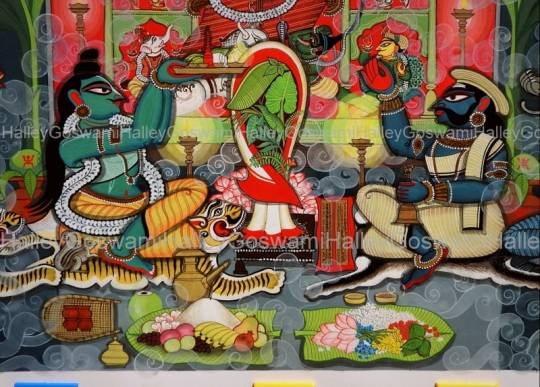
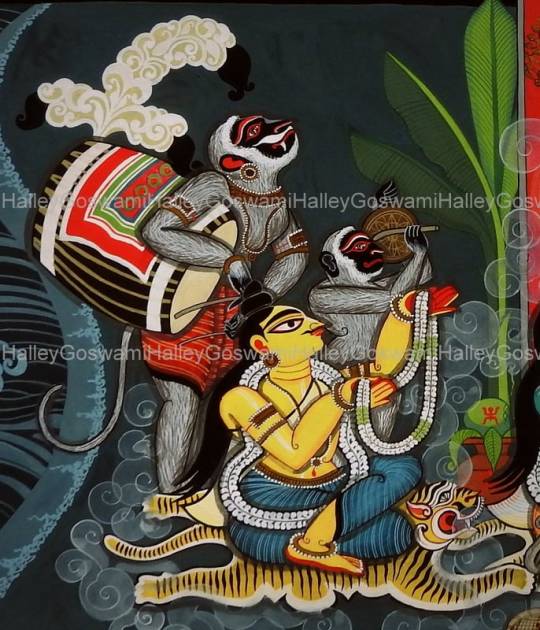

Durga puja by Ramachandra.
Before I begin , let me extend to everyone my heartfelt wishes for Navaratri and Sharadiya durgotsav . Most of us are completely unaware but Devi puja has already begun yesterday in many old aristrocract homes and ancient pujas of Bengal through ghat sthapan and ‘bodhan’ ritual . Yesterday was the auspicious Navami tithi of Krishna Paksha . The puja that spans from Krishna paksha Navami to the following Shukla paksha Navami is called Durgotsav .
It was much later when Durgotsav started transforming itself from a king’s royal festival to common man’s celebration , that the elaborate 15 days long worship became obsolete and the shorter 5 day alternative ( puja starting from Shashti the 6th day of Navaratri ) became normative . In modern times , most pujas begin on shashthi tithi . Most Bengalis are unaware of the original Krishna Navami bodhan and 15 days durgotsav .
But although the Krishna Navami tithi is forgotten , the tale of Ramachandra’s worship of Durga remains popular .
Kavi Krittivasa’s Bengali Ramayan narrates the story where Shri Ram sees Goddess seated inside the royal chariot carrying Ravana in her lap ! Realising that he is blessed and protected by the goddess , Rama looses hope and starts to despair ! The devas panic and approach Brahma for a solution . Brahma asks Ramachandra to worship Chandika and earn her favour . As Krishnaa Navami and Pratipad was already past , Rama was advised by Brahma to do a ‘bodhan’ and begin worship on Shashti .
Ramachandra began to arrange for the worship with great enthusiasm , assisted by the vanaras and his associates . Ramachandra himself sculpted a clay image of the goddess and sat down to awaken her through bodhan ritual in dusk . But even after three days of puja , devi did not appear. Vibhisana advised to Rama to worship Durga with 108 blue lotuses that are only found in a distant Devi daha lake . Courageous Hanuman brought back the 108 blue lotuses and Rama began to offer them one by one after 'sankalpa' . However Devi hid one lotus to test Rama’s sincerity . When that one lotus was nowhere to be found , heartbroken Ramachandra decided to offer one of his eyes to the goddess because people call him lotus eyed one . Just as he was about to gauge out his eye , Devi appeared and held Rama by hand and said – “ Stop stop o lord . You are the purna brahman. You need not do such a thing . It is only to make my puja popular in the universe that you decided to sport such a leela . I am leaving Ravana . You may go and vanquish the demon king .
This story has been passed through generations in Bengal . However Krittivasa is not the creator of this story . The episode finds mention in many puranas and tantras a long time before poet Krittivasa .
In Devi Bhagavat Purana VedaVyas says –--------
“ When the separation of Sita grew unbearable , Rama worshipped Bhagavati in Kishkindhya and through that act was enabled to defeat and kill the evil demon king and his accomplices . It was only through the mercy of Devi that Rama was able to return to Ayodhya and enjoy the throne . “
At another place the purana seys –
“ In the holy land of Bharata , it was Raja Surath who first worshipped the great goddess . Later Shri Ram worshipped her for killing Ravana and that is how her puja became popular all over the three worlds .”
Kalika Purana describes –------
“ In the olden times , Brahma awakened the great goddess in night to bestow benediction on Rama and kill evil Ravana . Thus awakened , the goddess entered Lanka and engaged Rama and Ravana in battle as she feasted on the blood and gore of the slain monkeys and rakshasas . She ensured that this battle lasts for one week . “
Brihaddharma Purana describes --------
“ Brahma said to the devas – ‘O all knowing devas . We ought to perform swastyayana for Rama’s victory . But nothing can be achieved without the grace of Bhagavati who must be awakened . “
Then Brahma and the devas began chanting hyms to devi who then appeared in form of a child and said – “ O Brahma and devas , im pleased with you all . Hear what I have to say to you . Tommorow at dusk perform bodhan and awaken me under the bilwa tree . Only then will your desires be fulfilled and Rama get his victory . “
The next day the devas and Brahma went to the bilwa tree in a remote region and saw the goddess in form of a small girl , sleeping peacefully on a leaf of that tree . She was shining like molten gold , her waist was thin and she wore new garlands . Her lips were full like bimba fruits and everything about her was auspicious . Then everyone began to sing hymns to her to awaken her from her sleep . Devi got up , blessed the devas and disappeared .
In the lalita Trishati Stotram of Brahmanda Purana one verse says - " Lakshmanaagraja pujitaa " . Goddess who is worshipped by the elder brother of Lakshmana . This small utterance also harks back to the legend of Ramchandra's Durga puja .
Krittivasa merely used the puranic tales and rearranged them in his own way .
Ramachandra is inseperable from the culture of Durga puja in Bengal . Which is why one finds a painting of Ram durbar on the chaala chitra ( backdrop / prabhavali ) of the durga pratima . It is believed that after killing Mahiravana , Hanuman lifted the devi murti that he worshipped and had it brought to Bengal where he installed it in the sati peetha of Yogadya . Yogaadya is one of the 51 Sati peethas where body parts of sati's body fell after daksha yajna . Eeven today , during the days of Durga puja , Ramayana paath and Ramayana gaan is performed in the temple premises .
The Valmiki Ramayana however does not have any mention of Durga puja . There Ram recites aditya stav before killing Ravana . However it must be understood that the legends of Ram finds numerous expression through numerous authors and narrators in each region of the subcontinent . Each version has its own religio-cultural merit . And that pluralism is verily the beauty of Hinduism ! Even the story of Lakshmana drawing the lakshamana rekha around Sita is not there in Valmiki Ramayana but has its origins in Krittivasa's Bengali Ramayana . But think how important the idea has become in modern indian culture !
The word bodhan means to awaken the ‘Bodha’ . The same bodha which made Siddhartha Gautama into the Buddha . Bodhan also means to awaken the devi within us . In the dusk of Shasthi as the darkness slowly creeps in and birds return to roost …….. when the slight autumnal nip in temperature and the fragrance of freshly bloomed shiuli flowers have clothed the earth in robes of festivity …...... the Bhattacharya sits under the bilwa tree beside the lamp , invoking the great goddess from her sleep ! As night descends on the surroundings , light begins to shine within our hearts ! Just like the saying of Bhagavan in Gita – “ What is night for ordinary jeevas is day for the gyani “ ! That verily is the essence of bodhan !!
Breaking the stillness of the night , the auspicious chants of Bodhan mantra can be heard – “ aim , ravanasya vadhaarthaaya ramasyaanugraha cha , a-kaale brahmnaa bodho devyaastwayi kritah pura “
Painting and text by Halley Goswami,
if you want to buy this painting or others of the genre go to: https://www.facebook.com/Halleysart
27 notes
·
View notes
Text
THE IMPORTANCE OF INDIAN FESTIVALS
It's the whole question of the world --the moons, the values and myths," says Malvika Singh, editor of India magazine, a cultural publication in New Delhi." They are the life of the people. It's not so much a festival as living and prayer."
In India, the abundance of festivals originates from the nation's religious diversity. For many, festivals are personal family affairs. However, there probably are several countries where rituals are performed with such public zest and uninhibited gaiety.
These include the smaller melas or classic state fairs, and they frequently are as colorful as the bigger spectacles. Significant temples have their own calendar of events, honoring favorite deities in the town. The feast is devoted to the thousand-headed hydra, Ananta, whose coils form the couch of Vishnu and represent eternity. On this day, live cobras or their graphics are worshipped, and snake charmers do a lively business. Bengal and Kerala are facilities for snake worship.
Some festivals celebrate a specific god's birthday such as Ram navami for arrival of lord Ram, Ganesh chaturthi or Ganesh utsav for arrival of lord Ganesha, Christmas celebrated for arrival of lord Jesus Christ. Sivaratri (March 8) is a feast in honour of Shiva and parties center from the sacred city of Varanasi at north-central India. The loyal hold processions into the temples and all-night vigils, which are supposed to guarantee material prosperity and heaven after death. The folks chant mantras to remain alert and alert the lingam, a stone phallus that symbolizes Shiva.
The bamboo and paper figures tower against the fading evening light. Celebrated in late October or early November, households spend the weeks before Diwali sprucing up their homes, buying gifts and stocking up on festive foods and sweets. It's reminiscent of Christmas in Western countries. So many reasons and lots of seasons for many festivals. Not everybody follows every festival. Fundamentally we Indians long ago obtained it that festival is a motive for entire family to meet and catch up, be together, relax and feast together and live happily. Festivals also give us a much needed break from our everyday occasionally monotonous life.
Here's a sampling of important festivals, their date this season and the best places to watch them. (A comprehensive calendar of Indian festivals can be obtained through government tourist offices in big Indian cities.)
Holi (March 26) is an extravagant Icelandic feast marking the coming of spring. It's a time for playing tricks on others and making them seem ridiculous, even people who are your social superiors. Bonfires are lighted and the roads are packed with people throwing colored powder or water. The god Krishna, an incarnation of Vishnu, is often honored at this moment, so the very best to go through the festival is in Mathura, his birthplace, south of Delhi. Kumbha Mela (the second week in April) is held just once every 12 years, and will occur this year in Hardwar, a north India mountain town.
This festival is India best periodic honest. Millions will flock to the town to bathe in the Ganges, which plunges through a mountain gorge now and starts its slow motion to the Bay of Bengal in the east. One myth states that a god in the shape of a bird uttered a coveted kumbha or jar of ambrosia and stopped at Hardwar on the way to heaven. Another suggests the sacred nectar spilled in this place. (really Krishna), probably is the most famous Hindu shrine. An enormous decorated chariot, 45 ft high with wheels seven feet in diameter, bearing a picture of the god, is pulled through the streets by pilgrims.
It's most spectacular in Delhi, which stages a vibrant military extravaganza.
Pushkar Cattle Fair (Nov. 16) is among India's most vibrant events. Over 200,000 people flock into the city, bringing with them thousands of camels, cows and horses. It's an important tourist event with a massive tent city set up to accommodate 3,000 visitors. Advance reservations are advised.
Ugadi / gudi padwa is brand new year for Kannada Telugu Tulu and Marathi speaking people that is a festival of new year after the language that these individuals are speaking specifically Kannada Telugu Tulu Marathi.
On the night of Diwali, which is known as the Festival of Lights, buildings and houses are summarized with countless oil candles and lamps.
Festivals like karva chauth, bakri identification and ramzaan come on a specific phase of the moon. "It's the tiny festivals," says Singh,"which are really the mind of the country." To get a visitor to India, a festival is an opportunity to glimpse the heart and soul of the nation. Significant parties are open to tourists, but others are mostly family vacations.
Ganesh Chaturthi (Sept. 7) is enthusiastically celebrated in Bombay. The feast honors the favorite elephant-headed god whose odd appearance has a lot of explanations. The most prominent is his jealous father, Shiva, found him guarding his mother's home, failed to recognize him and lopped his head off. To placate his wife, Shiva promised to get the boy a new mind. The first one that could be procured was the elephant. In Bombay, pictures of Ganesh, the god of wealth, are transported through the streets to the waterfront and immersed in the sea.
Some festivals such as vata savitri, varalakshmi vratam, karva chauth etc are distinguished by girls by keeping fast for extended life of the husbands. Karadaya nombu is a festival one of tamilians observed by woman child to married women, where they tie a sacred yellow thread around their necks and pray for good husband (unmarried women ) and long life of the spouse (married women) and this same man ought to be their husband to get next every birth.
Understanding and appreciating a festival, it is helpful to have a basic outline of the Hindu pantheon.
Brahma is rarely worshipped today. Vishnu and his wife Lakshmi still are widely admired. He and his wife, Devi, may take tens of thousands of forms and are known by several names.
In the coming months, there could be chances to see many more. For India is a nation imbued with the joyous spirit. Religion is a living force , and festivals are its saying.
India is a land of individuals who follow many religions and lots of gods. The reason we have numerous festivals is since some are based one's faith, some to celebrate god's birthday, some derive from harvest seasons, some are based on new years of different religions or languages, some are based on solar calender and a few are based on the phases of the moon and moon calender.
The middle for the feast is Mathura, where dances are held to honor the god of dance and song. Young men form human pyramids and try to break yogurt pots hanging over the roads. This is in honor of the child Krishna who stole yogurt with the support of his friends. Many significant holidays are observed throughout the country, but how they're celebrated varies from area to area.
In New Delhi, Dussehra focuses on the exploits of Rama, the Traditional Hindu hero. Pictures of the goddess are carried through the streets and immersed in the sea or river. Dances, drama and other cultural displays are often held.
Some festivals also occur by year like vasant panchami which celebrates spring. There are a few festivals celebrated solely to celebrate the brother bond and family bonds like kanupadi the day after Pongal, Raksha Bandhan, Bhaubeej.
The event is Dussehra, the culmination of a 10-day Hindu festival. It commemorates a scene from the Indian epic,"The Ramayana," where the hero king Rama defeats his evil rival Ravanna and his allies.
Festival of the Automobiles (July 9) is a colossal event held in Puri in the eastern state of Norissa. The Temple of Jagannath, lord of the world
Festivals like makar Sankranthi, pongal, baisakhi, Tamil new year, vishu arrive annually on a date which changes only by one either back or forth. These are harvest festivals dependent on sunlight. Baisakhi Tamil new year and vishu are new years for Punjabi, Tamil and Malayalam speaking persons that is according to Hindu calender. Nowadays, traditional Buddhism is confined mainly to the temperate areas. The Dalai Lama and his followers fled to the city following the Chinese invasion of Tibet, and it is now a centre for Buddhism and Tibetan culture.
Onam Harvest Festival (Sept. 15) honors a fanatic, Mahabali. The devil was exiled into the nether world by Vamana, an incarnation of Vishnu, but each year he's permitted to return to go to his former kingdom. It's the most significant festival in Kerala and comes at the end of the monsoon. These sleek canoes with cobra-shaped sterns are paddled into the rhythmic strains of south Indian ship songs.
3 notes
·
View notes
Text
It is seen on the tenth day in the Hindu schedule month of Ashvin
Dussehra or Vijaya Dashami is praised, a day after Maha Navami. After twenty days will be amazing Diwali festivities the nation over. On Dussehra, models of Ravana representing the evil are ignited with firecrackers denoting the malevolent's decimation. On this day, Lord Rama killed devil ruler Ravana and the day is set apart as Dussehra, starting from Sanskrit words where Dush implies malevolence, and Hara implies devastating. While Ravana likenesses are singed in northern aspect of the nation, in the eastern part it denotes the slaughtering of Mahisasura - the bison evil spirit - by Goddess Durga. In the south, Dasara is commended as characteristic of the triumph of Goddess Chamundeshwari over the evil presence structure Mahishasura. In all the celebrations, the regular subject is triumph of acceptable over fiendishness.
May all the strains throughout your life consume alongside the representation of Ravana. May you be fulfilled and upbeat. Cheerful Dussehra!
Today is the day that advises us that at long last, evil consistently finishes and goodness wins. How about we recall it generally. Glad Dussehra!
May Lord Rama favor you and your family. Wishing everybody an exceptionally Happy Dussehra!
May all the hindrances get eliminated from your way this Dussehra. Welcome of Dussehra celebration.
As the representation of Ravana consumes, let your inner self and outrage additionally ignite with it today. Have an incredible Dussehra!
May every one of your concerns additionally vanish with the consuming of Ravana likenesses. Cheerful Dussehra!
May your difficulties burst away like the firecrackers and your satisfaction duplicate this Dussehra. Have a cheerful one!
Aap sabhi ko asatya standard satya ki mahavijay ka paavan parv. Glad Vijayadashami. Dussehra ki haardik shubhkaamnayein.
It's an ideal opportunity to praise the triumph of the great over the malevolence. We should proceed with a similar soul. Cheerful Dusshera
A period for festivity,
A period for triumph of good over awful,
When the world sees the case of the intensity of good.
Let us proceed with the equivalent "valid" soul.
Cheerful Dussehra
May God shower his choicest wishes over you and eliminate all shrewd obstructions throughout everyday life. Cheerful Dusshera!
Sending my all the best to you and your family on the favorable event of Dusshera. May you generally follow the way of Dharma like Lord Rama! Upbeat Dusshera, remain favored.
May this Dussehra bring you heaps of bliss, achievement and flourishing, and may your concerns consume with extreme heat with the representation of Ravana. Wishing you a year loaded with grins and bliss.
May Lord Rama continue lighting your way of progress and may you accomplish triumph in each period of life. Jay Shree Ram! Upbeat Dusshera 2019!
Adharm standard dharm ki vijay,
Asatya standard satya ki vijay,
Burai standard acchai ki vijay,
Paap standard punya ki vijay,
Cheerful Dussehra!
A Happy Dussehra to you and your relatives. Appreciate the firecrackers as demon Ravana goes up on fire.
Master Rama indicated the way that devilish ways must be put to end and truth consistently wins. may the adapting consistently stay with us. Upbeat Dussehra!
Ravan is known as the antagonist of Ramayana however he is likewise Brahma's incredible grandson. Numerous individuals stunned at that point, how it is conceivable that he was an incredible grandson of Brahma. The appropriate response is here, Ravan's dad was Rishi Visravas, who is the child of Prajapati Pulsdtya, One of the Brahma's ten "mind-conceived" children.
#2 People think Ravan has 10 faces however In some different adaptations of Ramayana says that Ravan has not 10 countenances, But is was showed up due to his mom gave him a jewelry that has 9 pearls, so an optical deception made for an observer.Vijayadashami in any case called Dasara, Dussehra, Dasara, Dussehra or Dashain is an essential Hindu festival celebrated around the completion of Navratri reliably. It is seen on the 10th day in the Hindu timetable month of Ashvin, the seventh month of the Hindu Luni-Solar Calendar, which customarily falls in the Gregorian extensive stretches of September and October.
Vijayadashami merriments consolidate marches to a stream or ocean front that pass on mud sculptures of Durga, Lakshmi, Saraswati, Ganesha and Kartikeya, joined by music and serenades, after which the photos are lowered into the water for deterioration and a goodbye.
1 note
·
View note